US Lawmakers Ask Tech Firms To Help Iranians With Internet
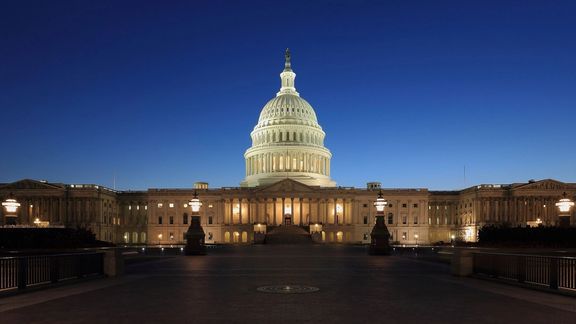
A bipartisan and bicameral group of US lawmakers have urged Google, Amazon, Meta and other tech companies to facilitate access to online tools for Iranian protesters.

A bipartisan and bicameral group of US lawmakers have urged Google, Amazon, Meta and other tech companies to facilitate access to online tools for Iranian protesters.
The move, led by Representative Tom Malinowski (D-NJ), was made on Thursday after the US Treasury Department relaxed tech restrictions for Iran last month. The letter for the call was signed by at least 10 lawmakers, including Senator Bob Menendez (D-NJ) and Representative Claudia Tenney (R-NY).
The letter, which was sent to heads of Google, Amazon, Apple, Meta, Microsoft and Digital Ocean, calls on the companies to "provide expeditiously and lawfully the tools Iranians need to circumvent government blockages." “As the Iranian regime continues to brutally repress those protesting for freedom, access to communications services is key,” read the letter.
All the companies work on technologies that include cloud and hosting services, messaging platforms and tools, developer and analytics tools, and access to app stores.
Frustrated with tech companies' lack of action to support the Iranians, Malinowski told Axios that “The ball is really in their court now to deploy technologies that the US government is permitting to ensure Iranians can actually communicate safely and securely.” He added, “Iranians are risking their lives, and these big companies seem to be unwilling to risk anything, and that's just wrong."
Internet restrictions and the use of anti-online censorship tools have surged in Iran since protests began in September. Iranian hardliners say restrictions will remain in place as long as street protests continue.
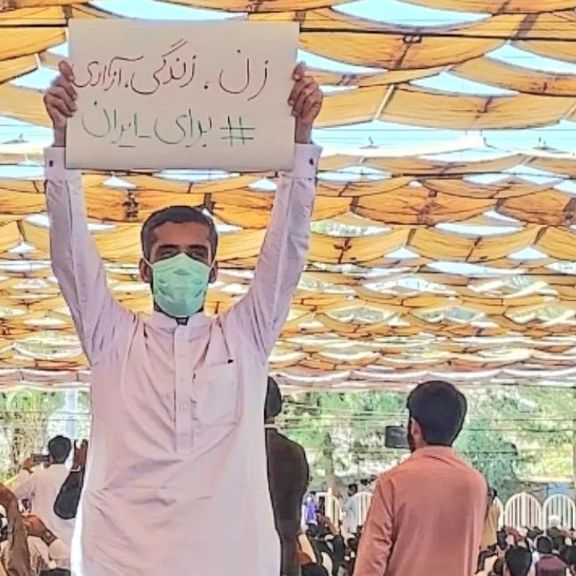
Several cities in the southeastern province of Sistan and Baluchestan have been scenes of heavy clashes between people and security forces with at least one 12-year-old boy reportedly shot dead.
Videos posted on social media show large crowds of people on the streets of the cities of Saravan and Iranshahr as well as provincial capital Zahedan, whose residents have witnessed another bloody Friday as security forces once again opened fire on protesters who were chanting "Death to Khamenei" on the streets after the Friday prayers.
Eyewitnesses say at least two dead bodies were taken inside the Makki Grand Mosque, where the top Sunni cleric of the province, Molavi Abdolhamid, delivered his Friday prayer sermons, urging people to control their sentiments. However, the citizens of the city held a protest rally after the prayers and chanted antigovernment slogans.
As seen in videos posted on social media, a 12-year-old boy was killed after a live bullet by the regime’s agents hit him on the head.
Dismissing the scenarios that the Islamic Republic has used to justify its clampdown on the antigovernment protests and trying to portray them as separatist movements, people of Zahedan chanted slogans such as "From Zahedan to Tehran, I sacrifice my life for Iran."
As confirmed by global internet watchdog, NetBlocks, Internet has been shut down in the city as it was during the Bloody Friday on September 30 when security forces killed at least 93 people, and injured hundreds more.
Fierce clashes occurred in Zahedan and several other cities of the province on Friday between protesters and security forces. People in the province have been holding protests on a regular basis since the nationwide protests began after the death in custody of 22-year-old Mahsa Amini, but the demonstrations have been intensified since the Bloody Friday.
As an apparent attempt to calm the situation in the city, authorities announced that the police chief and the head of a police station near where dozens of people were killed during the tragic event have been sacked, State news agency IRNA said on Thursday.
Sistan and Baluchestan is one of the few Sunni-majority provinces in predominantly Shiite Iran. Zahedan, close to Iran's southeastern border with Pakistan and Afghanistan, is home to a Baluch minority estimated to number up to two million people which have faced discrimination and repression for decades, according to human rights groups.
Earlier in the month, Molavi Abdolhamid, the religious leader of Iran’s Sunni Baluch population, blamed Iran's ruler Ali Khamenei for the Bloody Friday killings and called for accountability.
On Tuesday, October 25, an IRGC Colonel, identified as Mehdi Mollashahi, and Javad Keikha a member of the Salman Brigade which belongs to IRGC's Basij paramilitary forces, were killed when gunmen opened fire at them from a car and fled.
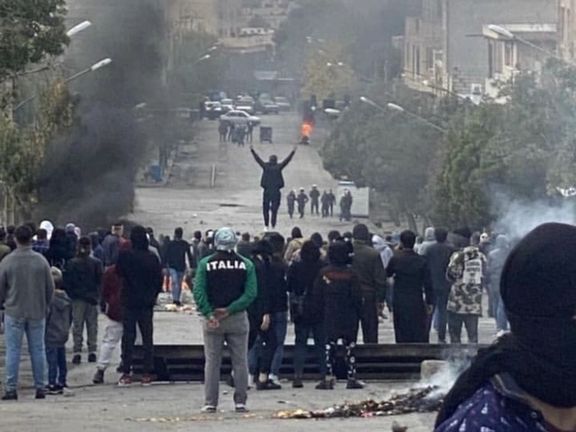
Protests continued with more intensity Thursday in Tehran and 26 other cities. Security forces used tear gas and shot several protesters dead in various cities.
Despite the heavy presence of security forces on the streets and violence against protesters, thousands held nighttime gatherings and chanted slogans against Supreme Leader Ali Khamenei and the Islamic Republic in the capital Tehran and many other cities, particularly in western provinces of Kordestan, East and West Azarbaijan, and Khuzestan.
Videos circulating on social media also show protests in Qazvin, Zanjan, Miandoab, Baneh, and Shahriyar.
According to Amnesty International, security forces killed eight protesters between Wednesday and Thursday night. Amnesty has called on the UN Human Rights Council to take decisive action and immediately convene a special session on Iran in order to prevent further loss of life in the country. “Failure to act decisively will only embolden the Iranian authorities to further crackdown against mourners and protesters,” an Amnesty statement said Thursday evening.
In Baqeri highway in eastern Tehran angry protesters set trash bins on fire and blocked streets.
Other videos show people protesting in Molavi neighborhood in the south of capital calling for the government’s downfall.
Videos posted on social media show a huge number of demonstrators gathered in Chitgar neighborhood in western Tehran chanting "This year is the year of blood, Seyed Ali [Khamenei] will be gone” and “We’re all Nika, we’re ready to fight" referring to 16-year-old Nika Shakarami who was commemorated by protesters in many cities on the 40th-day of her death.
Protesters also chanted “Women, Life, Liberty” in Ahvaz, capital of the oil-rich Khuzestan Province.
In Shoush in southern Khuzestan Province regime forces attacked people and fired tear gas to disperse chanting protesters.
Special forces fired tear gas at apartment windows in the same neighborhood (Chitgar) to silence people chanting from their windows.
Similar protests were also staged in Ekabatan in the west of the capital and Tehranpars in the east and several other districts of Tehran.
People in Punak neighborhood in western Tehran lit fires and formed human circles around it, chanting “Death to the child-killing government.”
Thursday evening's protest was the first-time large scale demonstrations in the northern city of Astara, Gilan Province.
In the northern city of Rasht, capital of Gilan Province people chanted slogans against clerics and clerical rule.
In the eastern religious city of Mashhad, home to an important Shiite shrine, antigovernment demonstrations were staged with people chanting “Freedom, Freedom, Freedom,” and “Death to the Dictator”.
People took to the streets in the Kurdish city of Bukan in West Azarbaijan chanting the same slogan.
In Shiraz where there had been fewer protests people called for support from their fellow citizens asking them to join the protests.
Videos posted on social media show unrest in Boroujerd in Lorestan province with police forces trying to crack down on angry dissenters.
Security forces also opened fire on protesters in the Caspian Sea port city of Anzali.
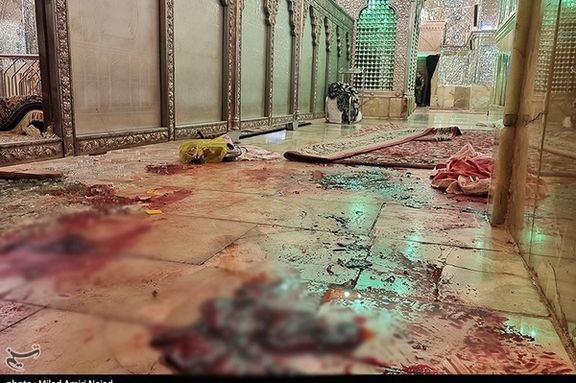
Iran's Revolutionary Guard (IRGC) says its intelligence wing (SAS) foiled a bomb attack Wednesday in Shiraz after a parallel deadly shooting at a shrine there.
"A bombing in Mo'ali Abad Street in Shiraz was detected and foiled by the Revolutionary Guards intelligence," Sepah news said, without giving further details.
There is no possibility to verify IRGC's claim, as the ideological-military-business organization and also Iran's Intelligence Ministry in the past have made numerous similar claims without presenting any evidence. In most cases no public trial of suspects were held or even names released.
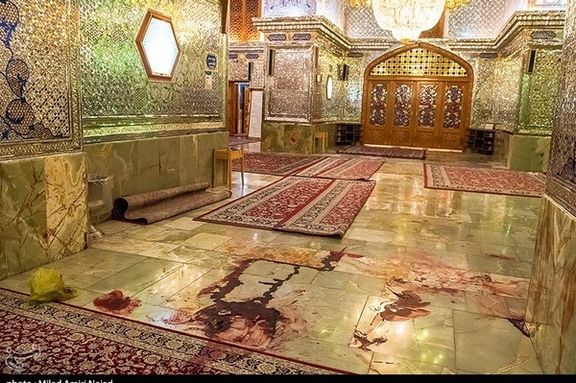
The IRGC-linked Fars News quoted “an informed security source in Shiraz” as saying that the remotely-controlled bomb was found and neutralized by security forces and intelligence ministry agents after the gun attack on Shahcheragh shrine.
Wednesday's shooting, which was claimed by the Islamic State (ISIS) group, killed 15 including children and injured dozens more at the Shahcheragh shrine. Officials said they had arrested a gunman who carried out the attack at the shrine. The attack took place amid widespread antigovernment protests across the country which began nearly two months ago following the death in police custody of Mahsa Amini, a 22-year-old Kurdish woman, on September 16.
The Iranian government has organized nationwide demonstrations against the shooting following Friday prayers. Funerals were also due to take place for the victims. Officials said they had arrested a gunman who carried out the attack at the shrine.
Supreme Leader Ali Khamenei vowed on Thursday to retaliate against those threatening the country's security without further elaboration as to whether this meant those responsible for the attack, protesters, or both.
"We will take revenge for the blood of the martyrs of Shiraz," said Tehran Friday prayer Imam Haj Ali Akbari about the attack on the shrine.
Many Iranians did not trust the authorities or believe that ISIS was responsible for the attack. They accuse the regime of being behind the attack or orchestrating it to blame protesters at home for causing unrest and insecurity and justify harsher crackdown against opponents.
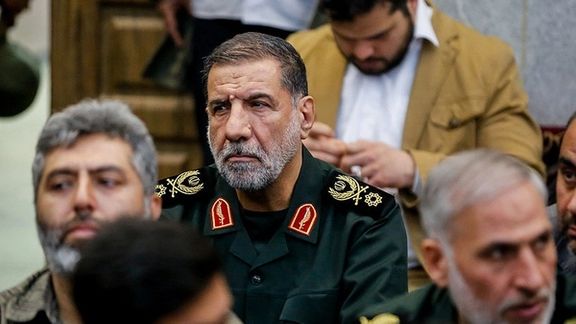
A hardliner member of Islamic Republic parliament has implicitly threatened that the government will respond differently to the ongoing popular protests from now on.
Mohammad Esmail Kowsari, also a high ranking IRGC officer said that so far “Protesters were able to scare businesses” but government policy will change.
Many small businesses close their doors during street protests, mostly in solidarity with the anti-government demonstrations, but regime insiders such as Kowsari claim protesters threaten shops and other small businesses.
The IRGC officer also repeated typical accusations made by hardliners that the protests and an attack in Shiraz Wednesday that killed 15 people are organized and financed by “foreign countries”, without naming any country. But he threatened that Iran “should deal with these countries in a serious manner.”
ISIS has taken responsibility for the attack on Shahcheragh shrine in Shiraz but many Iranians are not convinced the regime had no part in it, saying it is a scenario for cracking down harder on protesters.
Authorities have been claiming that “separatists” and “instigators” are behind the efforts to overthrow the government and break Iran into areas controlled by ethnic groups, a claim routinely denied by Iranians on streets and social media.
Following Supreme Leader Ali Khamenei’s lead, Iranian officials have alleged that protests are instigated by foreign enemies while the unrest continues.
President Ebrahim Raisi on October 25 accused “enemies of the Islamic Republic” of fomenting the protests, echoing what Khamenei said a day earlier. Parliament Speaker Mohammad-Bagher Ghalibaf in turn vowed the parliament would take action to change the ways of the morality police in a bid to calm the protesters.
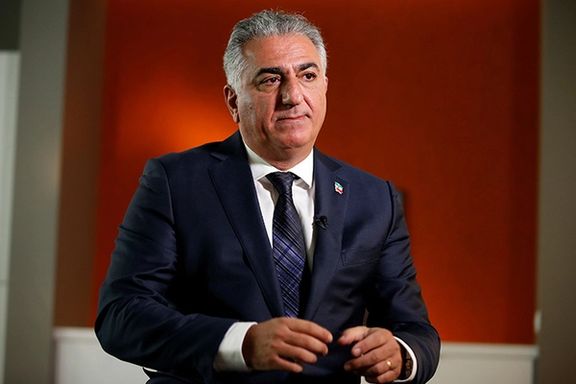
Iran’s exiled Prince Reza Pahlavi addressed the Iranian people Thursday, lauding their efforts in the way to another ‘revolution’ and hoping for a bright future for the country.
In a video message, he said Iranians have embarked on “another epic” on the 40th day of their “revolution,” referring to the nationwide rallies that were held to commemorate the 40th day since the death in custody of 22-year-old Mahsa Amini that ignited the current wave of protests. “You, my compatriots, on the 40th day of your revolution have begun another epic.”
He also honored Cyrus the Great -- the founder of the first Persian empire, the Achaemenids – saying that “As an Iranian I am proud that our nation, at the direction of Cyrus the Great, became the first cradle of human rights in the world. Yet our nation’s current rulers have the greatest animosity for human rights and freedom.”
“Let us, by honoring Cyrus the Great, take an oath with our nation and its bright future that Iran will once again be an exporter of the principles of human rights and an example for all the world,” Pahlavi said.
Scheduled nationwide protests in Iran on the 40th day of Mahsa Amini’s death started before noon Wednesday, October 26, with a large gathering at her grave in her hometown of Saqqez and lasted well into the night in many cities across Iran. The 40th day of a loved one’s death has a special significance in Iran, and in case of an unjust killing, the occasion turns into public mourning and fuels angry protests.